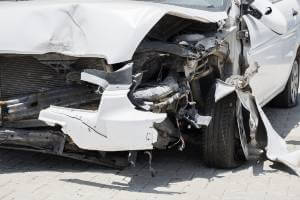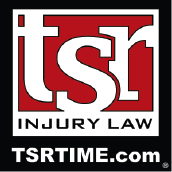Liability in a Crash Involving More Than Two Vehicles
 Most car crashes involve two vehicles, and one driver is often the one who bears the majority or all the fault for what happened. The typical example is car 1 rear-ends car 2 or car 1 runs a red light and strikes car 2. However, sometimes more than two vehicles are involved, such as in a crash on an interstate or multi-lane highway. When these crashes happen, it is often difficult to clearly or easily assess fault.
Most car crashes involve two vehicles, and one driver is often the one who bears the majority or all the fault for what happened. The typical example is car 1 rear-ends car 2 or car 1 runs a red light and strikes car 2. However, sometimes more than two vehicles are involved, such as in a crash on an interstate or multi-lane highway. When these crashes happen, it is often difficult to clearly or easily assess fault.
If you were a victim of one of these crashes, it is important to discuss it with an experienced attorney. He or she can help determine if you may be eligible for compensation and if you bear any fault for what happened.
Being partially at fault does not bar you from recovering compensation. However, you can be sure the insurance company will attempt to assign you more fault than you deserve, to reduce the value of your claim. That is why you need someone in your corner fighting for your best interests.
How Do Multi-Vehicle Crashes Occur?
Often, these crashes are chain reactions – one car hits another, which hits another, and so on. There is a higher likelihood for these crashes when there is high traffic or vehicles are traveling at high speed.
When there is a lot of traffic, one driver rear-ending another could easily cause the other driver to hit the back of another car. Multi-vehicle crashes are more likely when vehicles are traveling at high speed because there is less time to slow down to avoid a collision.
In a chain reaction crash, the driver who initiated the crash often bears the majority of fault. However, it is possible for other drivers in the chain to be partially at fault. If you were following another vehicle too closely when you were rear-ended by another vehicle, you may be partially to blame, even though you may not have hit the back of the vehicle in front of you unless you were rear-ended. There is always an argument you hit the car in front of you before you got rear-ended.
There are various reasons drivers could be assigned fault in a multi-vehicle crash, including:
- Following too closely
- Speeding
- Failing to use turn signals
- Driving a car with brake lights that were not working
- Distracted driving, such as texting and driving
- Government entities/public agencies that failed to properly maintain a road, causing drivers to stop abruptly to avoid obstacles
While defensive driving may help reduce your risk of getting into a crash, including a multi-vehicle crash, you cannot control what other drivers do.
Things to Remember After a Multi-Vehicle Crash
If you are ever involved in this type of collision, keep in mind that assessing fault may be very complicated. You should strongly consider meeting with a Bloomington car accident lawyer before talking to the insurance company, as they may try to trick you into blaming yourself for what happened. Insurance companies take recorded statements from you and all witnesses before determining liability. They want to get to you before you have legal representation so they can ask questions not normally allowed.
You may have strong reasons to believe you are to blame, at least partially. However, this is not something you should tell the insurance company or the other drivers. Discuss this with your lawyer, as these conversations are confidential. Sometimes you may think a potential “bad fact” is relevant when it is not. Not all facts are legally relevant.
Witnesses may be crucial in these kinds of cases, so if you are physically able, find and talk to witnesses while you are at the scene. With their permission you can record a video of your conversation on your phone.
Street or local business video footage may be available, which is another reason to strongly consider hiring an experienced attorney who will know how to obtain this footage (before it disappears) and other important evidence.
How Does Comparative Fault Apply to Multi-Vehicle Crashes?
In Minnesota, you can pursue compensation from anyone who bears less fault than you do for the crash. However, your compensation award will be reduced by your percentage of fault for the crash. For example, if you are 10 percent at fault because you were speeding slightly when the crash occurred, your compensation award would be reduced by 10 percent. In other words, you would still be able to collect 90% of the damages you sustained.
You can discuss this law in more detail with one of the licensed attorneys at TSR Injury Law if you schedule a free consultation.
Injured in a Car Crash and Need Legal Help? Call TSR Injury Law Today
At TSR Injury Law, we know how difficult the aftermath of a car crash can be physically, financially and emotionally. We have assisted many crash victims as they sought compensation for damages. We have extensive knowledge of the legal process, including how insurance companies try to avoid paying fair compensation to crash victims.
Our firm has obtained $1 billion over more than 20 years representing injury victims in Minnesota. The consultation is free of charge. There are no upfront fees for hiring our attorneys. We do not get paid unless you get paid through a settlement or courtroom victory.
We are here to help. Phone: (612) TSR-TIME.



